

Exploring our past to sort out myth from reality
Share this Page on
Facebook or Twitter

These are the voyages of the TimeShip Anachron.
Our Mission: To boldly explore the past, dispelling
mythinformation and mythconceptions
of American History along the way.
 Visit us on Facebook
Visit us on Facebook


These are the voyages of the TimeShip Anachron.
Our Mission: To boldly explore the past, dispelling
mythinformation and mythconceptions
of American History along the way.

Exploring our past to sort out myth from reality
Share this Page on
Facebook or Twitter
 Visit us on Facebook
Visit us on Facebook
Meet MythAmerica Series

The Rise of Big Brother, Part 2
Uncle Sam and Big Brother
There is no question that we are living in an intrusive age. Surveillance and inspection really do play a part in our daily lives. You can’t even go visit Mickey Mouse in Disney World’s Magic Kingdom without having a security employee of Disney World rifle through your purse, camera bag, and back pack before you are allowed to enter.
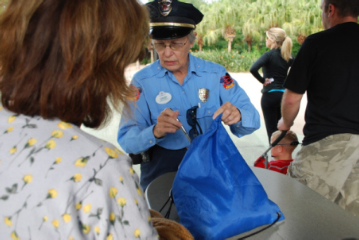
All across the country, even in smaller towns and cities, cameras have gone up at some busy corners to record every single vehicle passing through the intersection, and spot drivers who fail to obey the traffic signals.

When the ticket comes in the mail showing a clear photo of your car entering the intersection after the light has turned red, you realize that you have no wiggle room to argue about the fine.
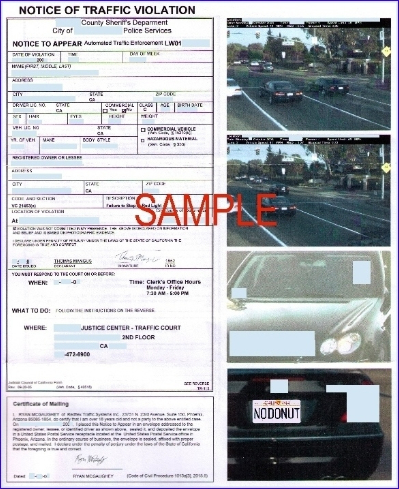
More despised by most people are the airport security inspections, that may include pat-
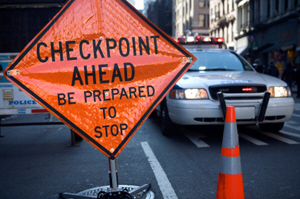
Some would like to insist that these intrusive procedures mean our American society is now almost to the point of being “just like” the Orwellian society of the novel 1984. And that this is because we have a national government…perhaps even a single national leader, Barack Obama…who is “just like” Big Brother of Orwell’s novel. “Oh,” they insist, “if only we could return to the Land of the Free as it was 100 years ago. Back when Big Government didn’t exist, and you could come and go as you liked without any fetters on you.”
Is this true? Did we “once upon a time”…and until not all that long ago, maybe at least until the end of the 1950s…have an idyllic country, void of any hint of “totalitarianism,” peopled with “fiercely independent” men who would not tolerate any interference with their “personal sovereignty”?
We might first ask…is the type of surveillance and inspection I’ve described above really “just like” the tactics of Big Brother? Yes, the technology really has progressed to the point that the “system” used by Big Brother is now possible, in a way it wasn’t in 1948 when Orwell wrote. Video transmission methods now would make possible imposing two-
Is that really the purpose of inspecting bags at Disney World, or body cavities at the airport? Is it really the purpose of traffic checkpoints or red light cameras?
I am in full agreement with those who think that some of the intrusive methods used in society these days exceed common sense, and have been imposed as an over-
But no, I do not think that Barack Obama is some sort of mesmerizing puppet master using such technology to turn people’s brains to mush and allow him to “take over” permanently as a dictator. If that is his intent, he’s certainly a very ineffective puppet master! He has continual problems getting adequate support from the public or from Congress for even his most cherished programs.
The specific question being addressed in this “Rise of Big Brother” report is this: Whatever level of interference in “personal freedom” you may think is prevalent in our society now, do you think you would have been SO much happier with “the way it used to be” 100 years or so ago?
Let’s examine that possibility.
Back in 1912, the US had just elected a Democratic president for his first term, Woodrow Wilson.

Before the end of his second year in office, a major war broke out among the European nations. The general mood in America regarding becoming involved “over there” at the time, and for the next three years, was contrary to such involvement. Reflecting this attitude of the populace, Wilson himself made every effort to keep the country neutral, and to attempt to “broker a peace” among the combatants in Europe.
Fast-
This classic ad, that barely takes a minute to watch, is called “Daisy Girl.” Pause here and have a look at it.
Though only aired once (by the campaign), it is considered an important factor in Johnson’s landslide victory over Barry Goldwater and an important turning point in political and advertising history.
… “Daisy” aired only once, during a September 7, 1964 telecast of David and Bathsheba on The NBC Monday Movie. Johnson’s campaign was widely criticized for using the prospect of nuclear war, as well as for the implication that Goldwater would start one, to frighten voters. The ad was immediately pulled, but the point was made, appearing on the nightly news and on conversation programs in its entirety. [Wiki]
Goldwater’s campaign had indeed provided fodder for this ad, since he openly promoted an aggressive US military. Johnson implied at the time that he was in favor of de-
As casualties mounted and success seemed further away than ever, Johnson’s popularity plummeted. College students and others protested, burned draft cards, and chanted, “Hey, hey, LBJ, how many kids did you kill today?” Johnson could scarcely travel anywhere without facing protests, and was not allowed by the Secret Service to attend the 1968 Democratic National Convention… [Wiki]
And therein is an amazing analogy with Woodrow Wilson.
Going into the 1916 election season, incumbent president Woodrow Wilson was the “candidate of peace.” A visitor from another country could have figured that out immediately from the campaign buttons people were wearing.
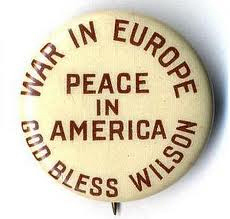
The main slogans promoted by those campaigning for him were variations of the phrase “He kept us out of war.” Such as the entry in the campaign poster list on this campaign truck: “Who keeps us out of war?”
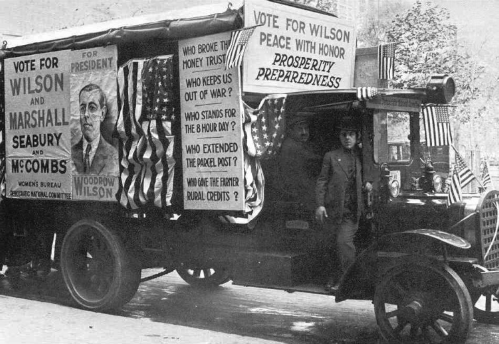
Or the slogan on the poster on the wall in this British cartoon of the time: “Vote for Wilson who kept you out of the war!”
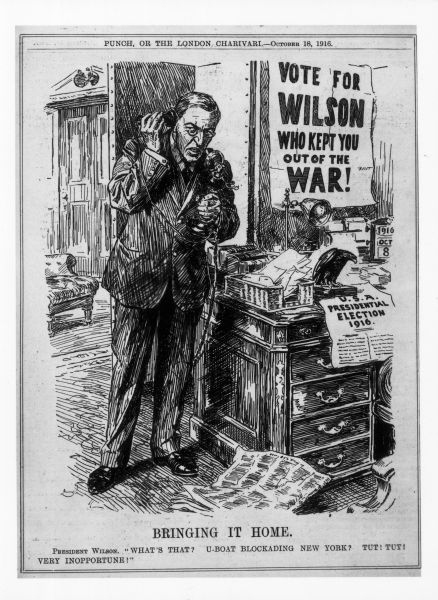
Some voters were pacifists by nature. They felt military solutions to world problems should be abandoned. Even among those Americans who were not opposed to the basic concept of war, a significant proportion felt that a European war was none of our business. Many even thought that it was being fought, on both sides, for purely “imperialistic” and/or economic purposes by all the powers involved. Americans saw no need for American Democracy to shore up the territorial claims of ancient monarchies across the sea.
Actually, there’s no evidence Wilson’s opponent, Republican Charles Evans Hughes, was particularly “hawkish” on the war. His campaign was much more focused on domestic issues. But the Democratic campaign did push the notion that a Republican victory would likely lead to war with both Germany and Mexico. (The Germans had approached Mexico with a bargain…if they would join Germany against the US, they would get back most of the territories they had lost to the US in Texas, New Mexico, and Arizona–but not California.)
Wilson won, but just like Johnson, he had barely taken the second oath of office when circumstances led him to change his mind. After German submarines sank seven U.S. merchant ships, Wilson requested that Congress issue a declaration of war on Germany. Congress approved such a declaration on April 6, 1917.
But how to make war? The previously neutral US had barely 120,000 men in a standing army. The first step was obviously to encourage men to volunteer for military service. And thus was born the most famous poster in American history.

And it was followed by many more.
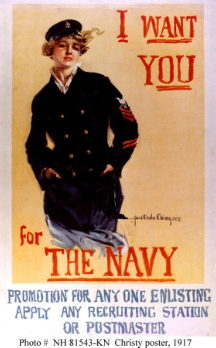
Along with popular songs and sheet music on the same theme.
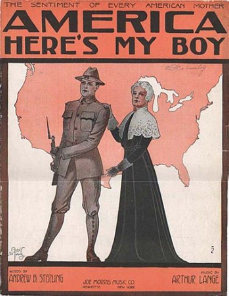
But there wasn’t time for a gradual build-
The only logical option seemed to be to institute the first draft of civilians since the Civil War. “Conscription” had been suggested for some years as an option to create a bigger standing army as part of just general “preparedness” for the country. But it had been a highly controversial idea. Some protested against a draft because they felt an all-
President Wilson himself had been publicly on record as being opposed to conscription as late as February 1917. But once war was declared, it very quickly became clear that relying only on volunteers to man the war effort would be impossible. Secretary of War Newton Baker (who had never been in the military and who had a reputation as a pacifist at the time he had been appointed to his position by Wilson in 1912) recommended to Wilson that he support a draft. Baker’s plan for such a draft was submitted to Congress, which enacted the Selective Service Act May 18, 1917. It required all males ages 21-
President Wilson had an odd way of introducing this new draft. One would tend to think of the term “draft” as meaning that someone who had not individually wanted to be in the Army was being forced by the power of the US government to show up for induction, under penalty of law. For of course, if most of the men of the country had been just itching to do their patriotic service for their country, they could have swelled the ranks of the volunteers immediately after the declaration of war. But instead of admitting this reality, Wilson chose to put it this way in his proclamation about the Selective Service Act … for the term “selective service” was carefully chosen:
“It is in no sense a conscription of the unwilling; it is, rather, selection from a nation which has volunteered in mass.”
From the evidence of history, there was a measure of truth to his statement. On the first official registration day, June 5, 1917, 9.6 million men between 21 and 30 showed up at the 4,000 national registration sites … “for what Newton Baker correctly predicted would be a day of “festival and patriotic occasion.”
As the months rolled by, the US government was immersed in its own priorities of running the war effort. Although it was aware that a certain percentage of draft-
But I’m here ta tell ya that one aspect of the spirit of Big Brother WAS already alive and well and beginning his rise. He just wasn’t where you might have expected to find him, in some secret room in the basement of the White House. And just as Orwell’s Big Brother was likely not any one man, but just an “icon” representing a group of men, this Spirit of Big Brother was manifested in multiple groups of people. (I kind of look at it as a “many-
People who were convinced that they were “on a mission.” A mission to make everyone conform to their own view of exactly what America should be all about. And exactly how “real Americans” should behave themselves. And exactly what “real Americans” should think. As Orwell coined the word in his novel, they were bound and determined to impose “Groupthink.”
Let me take you back a century and introduce you to some of these people, and give you a glimpse of their modus operandi. When we’re done, you tell me … do you really think you would have preferred to live back in those “Good Old Days”? Are we really living in the “Worst of Times” in the 21st century, with “less freedom” than US citizens “used to have”?
So let’s start with a definition.
The 1960s made the term “draft dodger” almost a household word. It meant, of course, someone who was subject to the draft who refused to cooperate with the system. He might avoid registering in the first place and hope to “fall through the cracks” of the system and be ignored. Or if “called up,” he might refuse to be inducted into the Army, or even emigrate to another country, like Canada, to avoid having to serve in the US military.
This term wasn’t common during the period of World War 1. At that time, the household word for such a person was a slacker. We still use the word slacker today in slang, but now it particularly seems to imply a person who has no “work ethic,” who is lazy. In 1917, it was particularly applied to a person who tried to avoid doing their civic duty by serving in the Armed Services when called upon by “their country” to do so, or who didn’t give “110%” effort at their war-
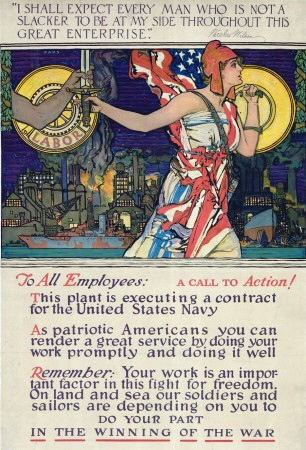
Of course the slacker was universally despised, including in Britain…
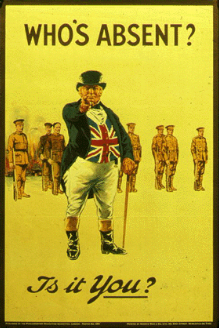
And in Canada.
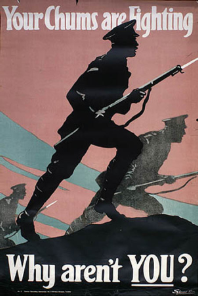
So what was to be done about slackers as the draft efforts of the country ramped up? It became as big…or bigger…an issue to just plain ol’ citizens as it was to the government.
During the course of the war, thousands of letters arrived at selective service headquarters alleging slackerism or disloyalty on the part of neighbors, colleagues, and even family members. Edna Shaw of St. Louis, Missouri, wrote to draft officials to turn in her friend Otto Schaflitzel. “I wouldn’t say anything about it,” she wrote, “only he is so disloyal for only being 24 years of age and single. [He is] hurting my feelings, when he talks about the country, ‘cause I have brothers in service and I will almost think … if I only had a gun I would kill him.” To ordinary Americans like Edna Shaw, giving herself over to the spirit of selective service required confirmation that the government would do its part to make sure that draft-
You didn’t even have to deliberately “avoid” the draft to be labeled a slacker:
Citizens also came up with their own definitions of draft evasion. In Worcester, Massachusetts, a French-
The slacker was widely perceived as a scourge on the integrity and honor of the United States of America. He was not to be tolerated. But what to do? The government was too busy to deal effectively with this undesirable element in society. So into the gap stepped some gung-
Let me introduce you first to the most well-
May I present to you, the Zealots of the First World War, the American Protective League:
At the outset of the war, the Justice Department’s Bureau of Investigation had fewer than three hundred federal agents on staff, and letters pleading for the investigation of disloyal Americans were already swamping its offices. Among the first to arrive was an offer from a group of Chicago businessmen to create an “American Protective League,” a new organization dedicated to guarding the home front.
In March 1917, even before the declaration of war, the bureau’s harried leader, A. Bruce Bielaski, accepted. By June, the American Protective League (APL) had one hundred thousand members in six hundred cities, and by the time the group dissolved in February 1919, as many as 250,000 men—and a handful of women, too, although official regulations denied them membership—may have served in this secret organization.
The APL, a blend of local and federal power, and of old and new methods of social control, was the product of a political culture of coercive voluntarism. [ibid]
The APL was, to all intents and purposes, an extra-
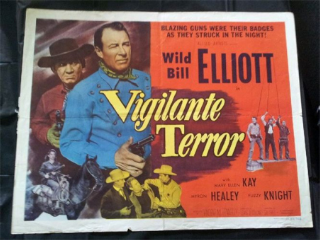
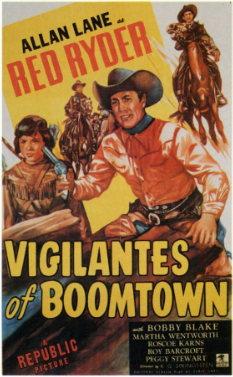
But the power and influence all across the nation—and sheer massive numbers—of these new-
What kind of men were part of the APL?
The volunteers of the American Protective League were professional men, typically above draft age or otherwise exempt. They joined out of patriotism and a sense of duty, to feel important in their communities, or just for something to do. Surviving documents from the Kansas chapters of the APL record white men in their forties and fifties with ties to a wide range of professional and fraternal organizations. They included a doctor, a bank cashier, a barber, an undertaker, a minister, a wrestler, insurance and real estate salesmen, some sheriffs and farmers, a lot of lawyers, the business manager of the Atchison Railway, Light and Power Company, and a reporter for the Emporia Daily Gazette, personally recommended for service by its prominent editor, William Allen White. [ibid]
And what kind of vigilantism did they indulge in?
League men embarked on unwarranted [without a legal warrant signed by a judge] searches and seizures, detained and arrested draft-
In spite of the image they tried to project to the public, they weren’t really “government officials,” but the government, through the Department of Justice, did end up “indulging” their egos.
The American Protective League had an ambiguous legal status. Members wore identification badges mailed out from headquarters in Washington and noted in their literature that they were “authorized by and auxiliary to the Department of Justice.” [ibid]
Yes, those cool badges …
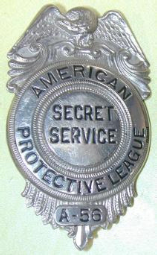
“Secret Service”! Sounds ominous. But the label carried NO legal power with it, and they didn’t “take orders from” the Justice Department. Most of the time they just went on their merry way doing what they thought needed doing. Yes, they dabbled in a wide variety of pseudo-
I’m guessing they got the same sort of ego boost that kids did back in the 1950s when they sent away enough box tops from Sugar Corn Pops to earn a “premium” from their favorite TV western—a gen-
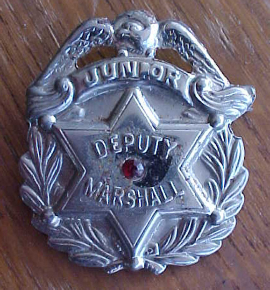
Except they weren’t little kids—they were grown men, who could create a lot of grief for anyone in their cross-
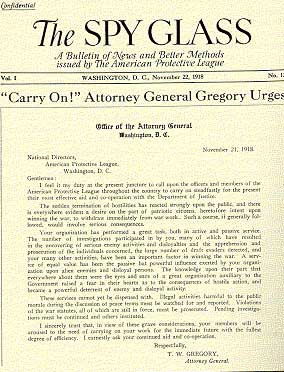
And, as you can tell from the comments above regarding anyone who could be labeled as some kind of “-
Initially, the American Protective League handled a wide range of cases: investigations of the character and loyalty of citizens and aliens, the circulation of seditious material or “enemy propaganda,” claims for draft deferments. But by the spring of 1918—probably because of agitation by rank-
I had never heard of a slacker raid. So when I first read the description of these “events,” I was utterly dumbfounded. If you think some governmental interference today with your total freedom of coming and going is problematic, be prepared to put it in the perspective of what US citizens put up with 100 years ago.
Read on to see what I found out about this astounding phenomenon. But first, we’ll take a flashback to the 1800s, to set the stage for a vivid description of the World War 1 raids.